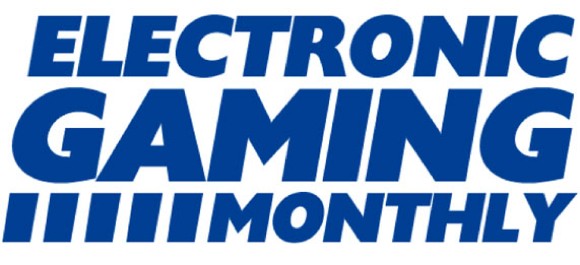Electronic Gaming Monthly in the late ‘90s through the mid ‘00s was so far and away the best gaming-related publication of all time that I’m surprised it hasn’t gone down in more legend and myth. It was like LeBron James these past few years, effortlessly great and fun and trailblazing — but also like The Rat Pack, a sort of cool and exculsive party that you wanted to be a part of.
Am I building it up too much? Maybe. It was, after all, a monthly publication of previews, reviews, features, and interviews about a nascent industry. We’re not talking high art.
But I will say this: My dream job was and always will be working for EGM in its glory years. If you offered me the chance to go back in time and take any job in history, I’d go work there for a few years. In a heartbeat.
So, what was it about EGM that made it the greatest? That made me borderline obsessed and inspired me to try and collect every one of its issues?
For starters, they had the best review system in the world. You always had to turn to the review pages first. They had three separate writers independently pen a review of the game, give it a score out of ten, then compare notes and make comments. The result felt a lot more like a roundtable discussion that really explored the strengths and weaknesses of each game.
Also, the review system seems harsh in retrospect. How often do you see 8’s and 9’s handed out like candy on game review sites? EGM stuck to its “5 is average” mantra: 8 was a highlight and 9 was a game of the year candidate. You could trust a high review score on EGM.
And the games that got 10s? Few and far between. It was a real milestone when a game earned the rarest of rare “Platinum Award” — given to a game that received a 10 from each independent reviewer. They didn’t give a Platinum in the magazine’s first TEN YEARS. The list of Platinum Award winners from 1998-2005 is a short list of the best games of their generation.
Along with their tight game review hallmark for excellence, their Game of the Year was easily the most interesting and compelling award of its type. It always seemed like EGM got it right, or — at least — they had really thought it through and could defend their choice.
They had great intuition about what were the “pivotal” moments in game history — they correctly predicted that struggling Xbox would stay afloat on Halo’s success, that Ocarina of Time would go down as one of the three or four greatest games ever and would inspire the industry’s design choices for the next decade, and that people would flock to “sandbox” games for years to come thanks to Grand Theft Auto III.
But you know what? Those were the reasons I liked and admired EGM. Were they reason I LOVED Electronic Gaming Monthly, though? No, of course not.
It was the magazine’s personality. You could tell that the writers liked each other and hung out playing games with each other in their spare time. You could tell that the staff was a great bunch of people to shoot the shit with, that the editors hired people with interesting personalities and passions as much as they did for writing skill. Writers signed everything they wrote, so you could get a good feeling for different writers’ personalities.
I used to know the names and personalities of most of the writers, but a few people come to mind. Dan “Shoe” Hsu, longtime contributor and eventual editor-in-chief, was a kind of Roger Ebert for games, half prophet and half bannerman for games and gaming journalism. Seanbaby (still a prominent Internet comedian) wrote an absolutely hysterical back-pages comedy column. I also seem to remember a guy named Crispin being the butt of a bunch of jokes.
The section I turned to after I read the reviews? Always the letters at the front of the section. I always loved to see what the readers had to say and, even moreso, what the writers had to say in response.
EGM’s biggest legacy, perhaps, are its legendary April Fools Day gags. Some of them were so inspired — unlockable Sonic and Tails in SSBM, realistic-graphics remake of Wind Waker, a Mario-Square-Disney crossover called Mushroom Kingdom Hearts, “All Bonds” in Goldeneye — that other publications fell for them and covered them. The Sonic and Tails thing got so big that Nintendo Power, a competitor, had to officially refute it.
Its biggest April Fools’ gag, though, was its first: A fake character in Street Fighter 2 named Sheng Long. Their design was so popular (and, for awhile, widely believed to be real) that it was eventually ripped off by Capcom for Akuma, a very similar character in Street Fighter III. Can you imagine if you were the guy on staff who came up with that?
The magazine frequently made me laugh and smile and think, and it always made me curious about what was going to come. You have to remember that this was a time before there were reliable, well-done source of game news, so the arrival of the EGM was a big deal. It’s all I would do those evenings: read EGM, eat dinner, read EGM.
So what happened? The Internet happened, and gaming changed. With game blogs and news sites a dime a dozen, people stopped subscribing. Video games blew up from a multimillion dollar industry to a multiBILLION dollar industry, and the stakes and incentives changed. There was staff turnover, less room for freestyling and silliness, a few redesigns, and a growing sense that monthly rags were on the way out.
Average review scores gradually rose and diminished in depth, and then, one month out of the blue, EGM dropped its beloved out-of-ten review system for a letter grade system. It wasn’t the same. I no longer felt like the magazine was connected to what I’d read for years.
Their official web push, 1UP.com, was a neat early games-focused social network, and I liked the blogs for the old staff members I already knew. But by that time I was in my upper high school years and knew I was on the verge of moving on from EGM. When I went to college, I canceled my 10-year subscription (which only cost me sixty bucks!) with a couple years left on it. It was the end of an era.
But I have a couple boxes of EGM’s in my parents’ basement, and once or twice a year, I’ll flip through a couple issues and smile at the old jokes and remember when EGM was one of my five or ten favorite things in the world. Hell, looking back on it, I think I loved reading this game magazine more than I actually loved playing games.
Thank you, Electronic Gaming Monthly. It feels weird thanking a magazine that I paid to subscribe to, but, seriously, thank you. You increased my interest in games, but also in writing and comedy and creating.
A few bullet point thoughts before I end this nostalgia trip:
- In middle school and high school I scoured ebay for back issues of EGM. I remember right around the the magazine’s peak, the first issue went on ebay for $100, and a lot of early issues went for $200. Now? Exactly one back issue or collectors’ lot has a bid on it among dozens of posts. People stopped caring.
- I probably own a couple hundred issues, including a few repeats I got in lots and special editions and the like. I nabbed issue #1 on ebay for $20 once, and I have a few others from the late ‘80s and early ‘90s. (I also bought Nintendo Power #1 for as a throw-in with a lot of EGMs, and that now goes for $50+.)
- My most re-read features were their best-ever lists, which they printed three times: Issue #100, issue #150, and issue #200. The #150 issue was the one that really introduced me to classic video game canon (learned about so many great arcade, 8-bit, and 16-bit games through that), but #200 was definitely the coolest. They called it “the 200 best games of THEIR time” and rated which games were the most groundbreaking and fun. They included mini-interviews with some of the developers of the classic games and wrote little stories. It’s archived online now, in a poorly-formatted way, here.
- EGM had, hands down, the best “rumors” section. It seemed like every rumor was interesting, and an impressive amount went on to be true. They were also written from the perspective a shadowy secret agent, which made them a lot of fun to read through.
- I didn’t go through the narrative here of the magazine closing, then re-opening, in the early 2010s. I wasn’t reading the magazine at the time and didn’t follow the story too closely, but I’m sure you can read about it online.
- EGM’s biggest multi-platform competitors I knew about were GamePro and Game Informer. The former was the closest to having the same level of distinct personality (and even covered PC games!). But even at its best it was Sam Bowie to EGM’s Michael Jordan.
- Best ever review? Probably the giddy, two-page spread on Halo. Let’s also not forget Donn Nauert’s review of Flying Dragon, though.
- A spreadsheet of every one of EGM’s review scores ever has been floating around the web. I’ve uploaded here just in case it disappears elsewhere: EGM Reviews Archive







